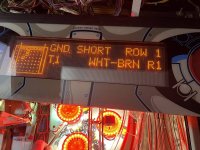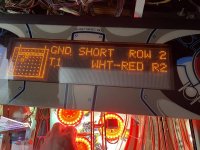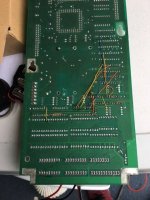Parisno
Registered
Noticed that the Jets, slings and kickback targets have stopped working so took a look at the switch matrix in diagnostics. Boot of the machine shows no errors enter diagnostics and test "T1 Switch Edges"
If I close any of the switches in column 4 that contains all the non-working items it shows the whole row as closed, see pictures. This happens for any switch in column 4 the whole row closes, the rest of the switches seem to work fine
Any ideas where to look next or what could be wrong?
If I close any of the switches in column 4 that contains all the non-working items it shows the whole row as closed, see pictures. This happens for any switch in column 4 the whole row closes, the rest of the switches seem to work fine
Any ideas where to look next or what could be wrong?



